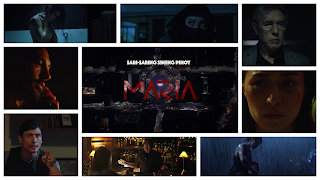The slums of Tondo crush the titular heroine of Lino Brocka's Insiang (Cinemanila Corporation, 1976), a young woman trapped in an environment of destitution and abuse which she can only struggle against violently and vainly. Brocka's portrait of familial treachery and societal abandonment channels its melodrama through the filter of neorealism, its story's heightened emotions kept at a simmer yet meticulously composed. Certainly, the root of her misery extends all the way home where her mother Tonya (Mona Lisa), bitter about her husband's departure, kicks her financially strapped in-laws to the curb so her young lover, Dado (Ruel Vernal) can move in before proceeding to badger her daughter into a Machiavellian rage. Beset by maternal resentment, her boyfriend Bebot's (Rez Cortez) callousness and Dado's rapist tendencies, Insiang (Hilda Koronel) plots her revenge with Brocka expertly dramatizing the understandable, if not prudent reasons for each character's behavior. What registers forcefully throughout isn't Insiang's literal plot twists and turns as much as the pervading mood of lonely powerlessness and the reactionary impulse to strike back against intractable forces and situations by any means necessary. It's an undercurrent conveyed by Koronel's guileless countenance and Brocka's unaffected depiction of the impoverished setting and its beleaguered inhabitants. Insiang's defiant actions cast the film as a lurid ode to feminist self-actualization. But with the misery-wrought finale and its tangled knot of obstinate, volatile, unfulfilled feelings and desires, Brocka ensures that any minor triumph enjoyed by his morally and emotionally warped protagonist is tempered by an overriding dose of bittersweet sorrow and despair.
Frequent Brocka collaborator, cinematographer Conrado Baltazar shot the film in the open-matte 1.37:1 aspect ratio making sure to leave room at the top and bottom of the frame to facilitate a full image, though a boom mike can be seen in one scene which leads me to believe that the film was framed incorrectly. Ironically, Insiang was released on DVD by Cine Filipino in its preferred format, lopping off the top and bottom in order to decrease the width of the black bars when viewed on 16x9 screens. Baltazar's camerawork combines gritty naturalism with core noir elements to produce a stunning image that's always been difficult to reproduce in the home video realm. Martin Scorsese's World Cinema Project however, has done a spectacular job, creating a new digital transfer in 4K resolution from the original camera negative. Here, the realism is uncompromised, with medium grain enhancing the slum setting and rough exteriors. Some of the solid backgrounds appear a little noisy at times and a few scenes suffer from a nagging bit of softness, but on the whole, the image is clear and well modulated. Close-ups caress Mona Lisa's iconic face and Koronel's unspoiled loveliness. Without a doubt, Insiang has never looked better and this superior effort makes an unforgettable film even more powerful. Dialogue can be problematic at times, bass frequencies are strong, nuances are also a bit more pronounced, but they seamlessly blend into the film's fabric. Criterion’s high-def presentation features a top-notch video and audio transfer, and fascinating extras to make every viewer an authority on this classic film. Like the best movies, it satisfies on many levels, forcing us to think about and reflect on a variety of substantive themes. It also inspires unabashed admiration for the sheer talent on display in front of and behind the camera. Insiang is one of the truly great Filipino films and an absolute must own.
Art Director: Fiel Zabat
Sound Supervision: Rudy Baldovino
Screenplay: Mario O'Hara, Lamberto E. Antonio
Director of Cinematography: Conrado Baltazar, F.S.C.
Film Editor: Augusto Salvador
Music: Minda D. Azarcon
Direction: Lino Brocka










